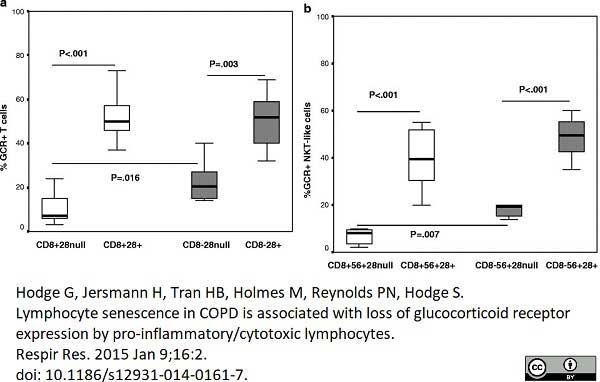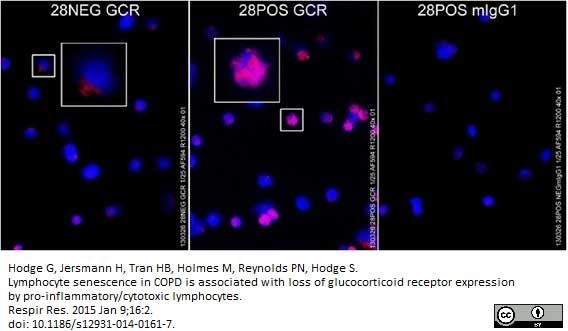Glucocorticoid Receptor antibody | 5E4


Mouse anti Human Glucocorticoid Receptor
- Product Type
- Monoclonal Antibody
- Clone
- 5E4
- Isotype
- IgG1
- Specificity
- Glucocorticoid Receptor
| Mouse anti Human Glucocorticoid Receptor antibody, clone 5E4 recognizes the human glucocorticoid receptor, also known as Nuclear receptor subfamily 3 group C member 1 (NR3C1), a 777 amino acid receptor bearing 3 distinct functional domains, an N-terminal modulating domain, a DNA binding domain and a C-terminal steroid binding domain. The human glucocorticoid receptor is located either in the cytoplasm of cells, prior to ligand binding associated with certain heat shock proteins (Kino et al. 2009), or the nucleus following binding to ligand (Werb et al. 1978). Mutations in the glucocorticoid receptor gene can lead to familial glucocorticoid resistance, characterized by elevated plasma cortisol levels (Malchoff et al. 1993). Mouse anti human glucocorticoid receptor antibody, clone 5E4 has been demonstrated to cross-react with the murine glucocorticoid receptor (Bergquist et al. 2014) |
- Target Species
- Human
- Species Cross-Reactivity
-
Target Species Cross Reactivity Mouse - N.B. Antibody reactivity and working conditions may vary between species.
- Product Form
- Purified IgG - liquid
- Preparation
- Purified IgG prepared by affinity chromatography from tissue culture supernatant
- Buffer Solution
- Phosphate buffered saline
- Preservative Stabilisers
- 0.1% Sodium Azide (NaN3)
0.1% Bovine Serum Albumin - Immunogen
- 26 amino acid peptide corresponding to residues 150-176 on human GCR linked to thyroglobulin.
- Approx. Protein Concentrations
- IgG concentration 1 mg/ml
- Fusion Partners
- Spleen cells from immunised Balb/c mice were fused with cells of the mouse Sp-2/0 Ag14 myeloma cell line.
- Regulatory
- For research purposes only
- Guarantee
- 12 months from date of despatch
Avoid repeated freezing and thawing as this may denature the antibody. Storage in frost-free freezers is not recommended. This product is photosensitive and should be protected from light.
| Application Name | Verified | Min Dilution | Max Dilution |
|---|---|---|---|
| Flow Cytometry 1 | Neat | 1/10 |
- 1 Membrane permeabilization is required for this application. The use of Leucoperm (Product Code BUF09) is recommended for this purpose.
- Flow Cytometry
- Use 10ul of the suggested working dilution to label 1x106 cells in 100ul.
| Description | Product Code | Applications | Pack Size | List Price | Your Price | Quantity | |
|---|---|---|---|---|---|---|---|
| Mouse IgG1 Negative Control | MCA928 | F | 100 Tests |
|
Log in | ||
| List Price | Your Price | ||||||
|
|
Log in | ||||||
| Description | Mouse IgG1 Negative Control | ||||||
References for Glucocorticoid Receptor antibody
-
Berki, T. et al. (1998) Production and flow cytometric application of a monoclonal anti-glucocorticoid receptor antibody.
J Immunol Methods. 214 (1-2): 19-27. -
Kim, S.Y. et al. (2010) Effect of p16 on glucocorticoid response in a B-cell lymphoblast cell line
Korean J Pediatr 53: 753-8 -
Bergquist, M. et al. (2014) Glucocorticoid receptor function is decreased in neutrophils during endotoxic shock.
J Infect. pii: S0163-4453(14)00081-4. -
Bergquist, M. et al. (2016) Glucocorticoid receptor expression and binding capacity in patients with burn injury.
Acta Anaesthesiol Scand. 60 (2): 213-21. -
Bergquist, M. et al. (2015) Impairment of neutrophilic glucocorticoid receptor function in patients treated with steroids for septic shock.
Intensive Care Med Exp. 3 (1): 59. -
Bergquist, M. et al. (2013) Expression of the glucocorticoid receptor is decreased in experimental Staphylococcus aureus sepsis.
J Infect. 67 (6): 574-83. -
Fragala, M.S. et al. (2011) Glucocorticoid receptor expression on human B cells in response to acute heavy resistance exercise.
Neuroimmunomodulation. 18 (3): 156-64. -
Hodge, G. et al. (2015) Lymphocyte senescence in COPD is associated with loss of glucocorticoid receptor expression by pro-inflammatory/cytotoxic lymphocytes.
Respir Res. 16 (1): 2.
View The Latest Product References
-
Liddicoat, D.R. et al. (2014) The glucocorticoid receptor 1A3 promoter correlates with high sensitivity to glucocorticoid-induced apoptosis in human lymphocytes.
Immunol Cell Biol. 92 (10): 825-36. -
Kowalik, A. et al. (2013) Dexamethasone-FITC staining application for measurement of circadian rhythmicity of glucocorticoid receptor expression in mouse living thymocyte subsets.
J Neuroimmunol. 261 (1-2): 44-52. -
Hodge, G. et al. (2018) Bronchiolitis obliterans syndrome is associated with increased p-glycoprotein expression and loss of glucocorticoid receptor from steroid-resistant proinflammatory CD8(+) T cells.
Clin Exp Immunol. 192 (2): 242-50. -
Yu, Y. et al. (2022) Glucocorticoid receptor expression in patients with cardiac arrest in the early period after the return of spontaneous circulation: a prospective observational single-centre study
BMJ Open. 12 (9): e060246. -
Hodge, G. et al. (2022) COPD is associated with increased pro-inflammatory CD28null CD8 T and NKT-like cells in the small airways.
Clin Exp Immunol. 207 (3): 351-9. -
Li, J. et al. (2021) Leukocyte glucocorticoid receptor expression and related transcriptomic gene signatures during early sepsis.
Clin Immunol. 223: 108660.
- RRID
- AB_10844347
- UniProt
- P04150
- Entrez Gene
- NR3C1
- GO Terms
- GO:0005515 protein binding
- GO:0003700 sequence-specific DNA binding transcription factor activity
- GO:0004883 glucocorticoid receptor activity
- GO:0005496 steroid binding
- GO:0005654 nucleoplasm
- GO:0005759 mitochondrial matrix
- GO:0006366 transcription from RNA polymerase II promoter
- GO:0008270 zinc ion binding
- GO:0016568 chromatin modification
- View More GO Terms
- GO:0034339 regulation of transcription from RNA polymerase II promoter by nuclear hormone receptor
- GO:0043565 sequence-specific DNA binding
- GO:0051789 response to protein stimulus
- GO:0071109 superior temporal gyrus development
MCA2469
If you cannot find the batch/lot you are looking for please contact our technical support team for assistance.
Please Note: All Products are "FOR RESEARCH PURPOSES ONLY"
View all Anti-Human ProductsAlways be the first to know.
When we launch new products and resources to help you achieve more in the lab.
Yes, sign me up
